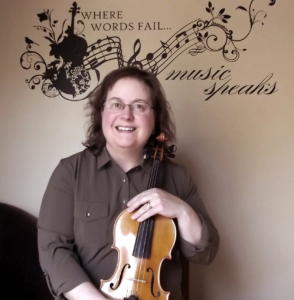
Thanks to those who personally responded to last issue’s appeal for cross-discipline student collaboration ideas! Dr. Karen Savage shared a wealth of resources and connections from her own explorations of this topic. She started with some personal observations:
“Success relies on an identified and committed small group of teachers working together who are willing to coach regularly and commit 1 or 2 of their own students. I know there are many of these throughout WSMTA.
[It’s] unbelievably helpful (and perhaps essential) to have the support of a local chapter, a prominent local/regional music presenter, and/or a music academy/university. The more the better, if the people enjoy working together. This helps with facilities, financial support, paying the coaches and reducing the cost for the students, performance opportunities, publicity/visiblity/community impact, prominent guest coaches and generally sharing the workload.”
Karen provided the names of some collaborative coaches and events that she has worked with. I’m planning to reach out to them for more insights.
Also helpful were some repertoire lists culled from presentations. Karen provided these links:
- Dr. Jenna Braaksma, University of Michigan – Her Collaborative Piano teaching dissertation included a graded list of collaborative pieces and a rubric for evaluating piano parts. Karen provided a handout from a presentation by Dr. Braaksma on “Exploring a Developmental Curriculum for Beginner Collaborative Pianists.” You can also read her dissertation abstract, which contains a link into the full PDF document with the graded list.
- Dr. Anatolia Ionnaides of the University of North Texas compiled a list of sample pre-college collaborative/chamber repertoire, with a variety of ensemble sizes and instrument mixes, from a program for which she coaches. The list is organized by order of technical difficulty.
Another teacher made a fine suggestion that often vocal solo pieces have intermediate piano parts. So a good first attempt at a cross-discipline collaboration might be between piano and voice students. I know there are many piano+voice teachers in WSMTA, so maybe some of you have tried this within your own studios. If so, let me know how it went and what you learned!
In my own chapter, two flute teachers are starting up a Flute Choir, to be made up of their own and “outside” students. Rehearsals will be held every other week for an hour at a local church. Since many instrumental students in the schools do not have or take the opportunity to seek out private instruction, this effort could be a bridge-builder that will forge stronger relationships between our diverse teaching and student communities. Kudos to Diane Layton and Sorcha Barr-Deneen!
Jane Melin, NCTM
WSMTA Vocal/Instrumental Chair
[email protected]